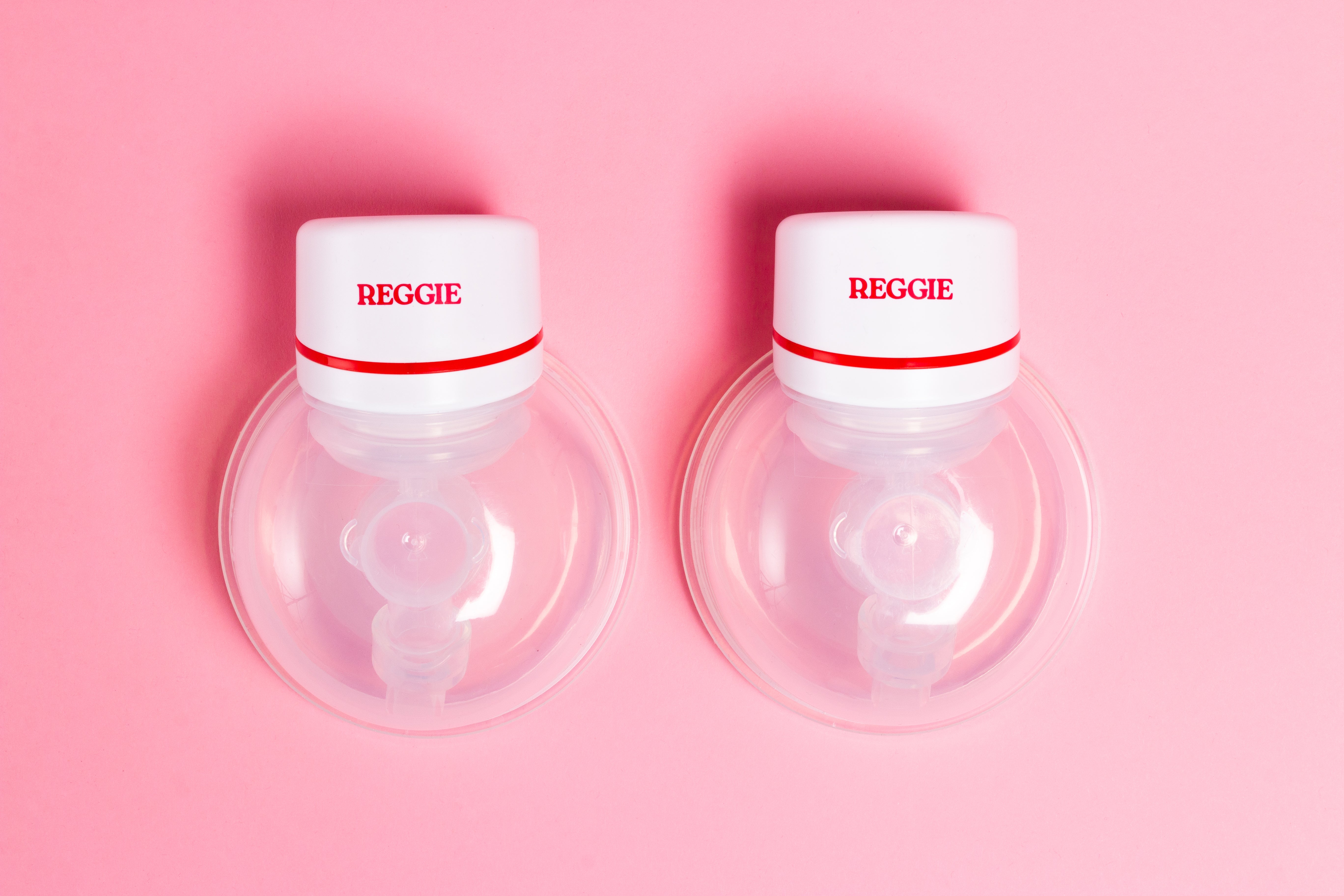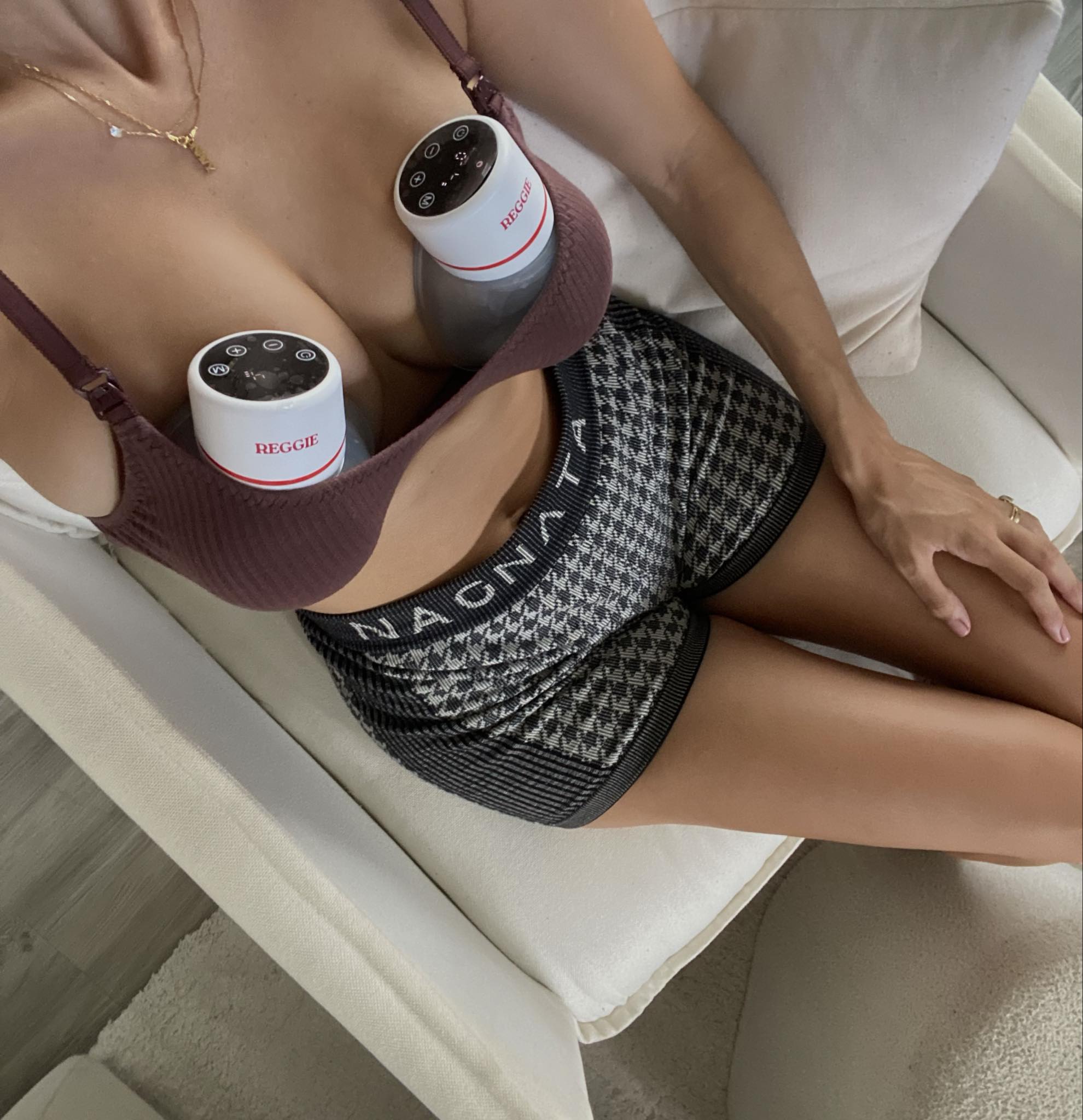Working Mum's Guide to Pumping at Work
Balancing work and breastfeeding is challenging, but with the right tools and strategies, it’s possible. In Australia, 71% of mums return to work by their baby’s first birthday, but breastfeeding rates drop significantly during this time. Wearable breast pumps and workplace rights can help bridge this gap.
Here’s what you need to know:
- Your Rights: Australian laws require employers to provide private spaces (not toilets), flexible schedules, and milk storage facilities.
- Essential Tools: Wearable pumps like Elvie, Reggie Baby, and Momcozy S12 Pro allow discreet pumping.
- Storage Tips: Keep milk cool in a fridge (up to 72 hours) or a cooler bag (24 hours).
- Scheduling: Pump every 3–4 hours and use hands-free pumps to stay productive.
With preparation, you can continue breastfeeding while returning to work. Keep reading for practical tips on selecting pumps, creating a pumping schedule, and ensuring privacy at work.
Workplace Rights for Nursing Mothers in Australia
The Sex Discrimination Act 1984 [3] ensures breastfeeding mothers are protected from workplace discrimination. Employers are required to offer reasonable accommodations like private pumping spaces (not toilets), flexible schedules, and facilities for milk storage [1][3][9]. Here's how you can make these rights work for you.
Australian Laws for Nursing Mothers
Australian law mandates that employers provide reasonable support for expressing milk at work. The Fair Work Act 2009 outlines specific rights, including:
- A clean, private space for pumping (not a toilet) [3][9]
- Flexible work arrangements to fit pumping sessions into your schedule [3]
- Milk storage facilities for safe handling [9]
- Regular breaks to express milk as needed [1][3]
How to Ask for Pumping Space
Since only 40% of Australian workplaces have formal policies for nursing mothers [7], clear communication is essential. Here's how to approach your employer:
-
Schedule a meeting before returning to work
Reach out to your manager or HR at least 4–6 weeks before your return. Share a written plan that outlines your pumping needs, including timing and space requirements. -
Suggest practical solutions
Highlight the benefits of supporting breastfeeding employees, such as reduced absenteeism and improved productivity [9]. Propose adjustments that align with your workplace setup. -
Document everything
After any verbal discussions, send a follow-up email summarising what was agreed upon. This ensures you have a clear record of arrangements.
Back-to-Work Checklist
Prepare for your return with these essentials tailored to your pumping needs:
| Item | Purpose |
|---|---|
| Wearable pump | Allows discreet expressing |
| Milk containers | For safe storage and transport |
| Cooler bag | Keeps milk cool (below 4°C) during transit [9] |
| Disinfectant wipes | For quick and easy cleanups |
| Spare shirt | In case of leaks |
The Australian Breastfeeding Association (ABA) offers workplace consultations through its Breastfeeding Friendly Workplace program [7]. If you face challenges or resistance, reach out to the Fair Work Ombudsman or the ABA for support [3]. Keep a copy of your workplace's breastfeeding policy (if available) and the ABA’s contact details on hand.
Selecting a Wearable Breast Pump
Once you've ensured your workplace rights are sorted, the next step is choosing a pump that fits smoothly into your daily routine.
Key Features to Look For
Here are the features that can make all the difference:
| Feature | Why It’s Important | Recommended Specs |
|---|---|---|
| Noise Level | Keeps pumping discreet | Under 50 dB |
| Battery Life | Reliable for the day | At least 2-3 hours |
| Milk Capacity | Reduces interruptions | 120-180ml per pump |
| Suction Strength | Ensures efficiency | 250-280 mmHg [4] |
| Smart Features | Tracks usage easily | App connectivity |
Wearable Pump Options in Australia
The Australian market has a variety of wearable pumps, catering to different budgets and needs:
Premium Range
- Elvie Pump: AUD 549 (single) • Quiet at <45 dB • 150ml capacity • 2.5-hour battery life • App-enabled for tracking [1][2]
Mid-Range
- Reggie Baby: AUD 299 (double) • 180ml capacity per pump • 3-hour battery life • USB-C charging [2]
Budget-Friendly
- Momcozy S12 Pro: AUD 259 (double) • 180ml capacity • Slightly louder at 50 dB • LED controls for easy use [2]
Finding the Right Flange Size
Comfort is crucial, especially when pumping during long meetings or focused work sessions. To get the right flange size:
- Measure your nipple diameter (in mm).
- Add 4mm to determine the ideal size.
- Check the fit: your nipple should move freely without pulling in the areola.
Keep in mind, flange size can change during the breastfeeding journey. Re-measure every few months to ensure the best fit [3]. Most brands offer a variety of flange sizes. For instance, Elvie provides options from 21mm to 30.5mm [4], while Reggie Baby includes a standard 24mm flange with other sizes available separately.
If you experience discomfort or low milk output, consider booking a lactation consultation for personalised advice [3].
Planning Your Pumping Schedule
Once you've chosen your wearable pump, setting up a practical schedule is key to keeping your milk supply steady. Most working mums need to pump every 3–4 hours [1]. The right schedule ensures your pump's features fit seamlessly into your daily routine.
Fitting Pumping into Work Hours
Making pumping work in a busy office environment comes down to smart planning. Block out 20-minute slots in your calendar so your colleagues know you're unavailable during those times.
| Work Schedule | Power-Pumping Schedule |
|---|---|
| 9:30 AM pump (pre-meetings) | 20 min pump → 10 min emails → 10 min pump → 10 min files → 10 min pump |
| 1:00 PM pump (lunch break) | |
| 3:30 PM pump (quiet time) |
For extra convenience, consider using a hands-free pump during lighter tasks. This way, you can pump and stay productive at the same time.
Tips for Smarter Scheduling:
- Plan pumping sessions during natural breaks to keep your day running smoothly.
- Use a wearable pump during virtual meetings (camera off) to stay professional.
- Set phone alarms to stick to a consistent pumping routine.
Workplace-Adapted Power-Pumping
If you need to increase your milk supply, power-pumping can be a great option - even at work. This method mimics cluster feeding by alternating between pumping and short breaks [10].
You can fit power-pumping into your day by using your lunch break for an intensive session.
Ideas to Boost Supply:
- Keep track of your output using your pump's app.
sbb-itb-08733ff
Privacy Tips for Workplace Pumping
Balancing privacy with pumping at work can be easier with the right tools and strategies. Pair your wearable pump (from the earlier section) with these tips to express milk discreetly and comfortably.
Using Quiet, Hands-Free Pumps
Modern wearable pumps are designed to help you pump without drawing attention. For example, the Reggie Baby pump (299 AUD) offers a hands-free experience, USB-C charging, and operates quietly.
| Model | Noise | Capacity | Price (AUD) |
|---|---|---|---|
| Elvie Pump | <45 dB | 150ml | 549 |
| Reggie Baby | 48 dB | 180ml | 299 |
| Momcozy S12 Pro | 50 dB | 180ml | 259 |
These pumps make it easier to stick to your schedule, even during meetings or while working on tasks.
Discreet Features to Look For:
- Adjust settings through smartphone apps for subtle control.
- Wear flowy blouses or button-up shirts for easier access.
Creating Private Space in Shared Offices
If your workplace doesn’t have a dedicated lactation room, you can still create a private space using simple solutions. Accessories like the Poncho Baby Nursing Cover provide full coverage and are great for shared environments.
Easy Privacy Hacks:
- Use a lightweight privacy screen in a quiet corner.
- Install tension rods with curtains to section off a spot.
- Book meeting rooms ahead of time for pumping sessions.
In open-plan offices, pick low-traffic areas that face walls for added privacy.
Pro Tip: Hang a "Do Not Disturb" sign during your pumping sessions to avoid interruptions.
To stay on track, the Medela Family app can help you log sessions and set silent reminders. This keeps your routine consistent while maintaining discretion.
Cleaning and Storage at Work
Once privacy is sorted, the next step is ensuring hygiene and maintaining milk quality. These practical methods can help you keep pumping safe and efficient without interfering with your workday.
Quick Pump Cleaning Tips
The CDC advises cleaning pump parts after every use[2]. Here are some easy, work-friendly cleaning options to consider:
- Microwave steriliser bags: Products like Medela's bags can sanitise parts in just 3 minutes.
- Pump cleaning wipes: Perfect for quick cleaning when a sink isn't available.
- Fridge storage: Store pump parts in the fridge between uses to save time[8].
Milk Storage Guidelines
Here are the Australian standards for safely storing breast milk:
| Storage Location | Maximum Duration |
|---|---|
| Room (16-29°C) | 4 hours |
| Fridge (≤4°C) | 72 hours |
| Cooler with ice packs | 24 hours |
Storage Tips for Work:
- Place milk at the back of the office fridge for more consistent temperatures.
- Use leak-proof containers to avoid spills.
- Always carry a cooler bag (≤4°C) for your commute to ensure milk stays safe for up to 24 hours, as recommended by the Australian Breastfeeding Association[11].
Conclusion
Balancing work and pumping is no small task - it takes planning and determination. By knowing your workplace rights and using tools like discreet pumps (Section 2) and practical storage solutions (Section 5), you're setting yourself up for success.
The strategies and tools we've covered highlight how preparation can make a difference. The Australian Breastfeeding Association’s Workplace Program has shown that the right support can play a key role in helping mothers meet their breastfeeding goals[12].
Whether you pump once a day or stick to a detailed schedule, every session counts. With 71% of Australian mothers returning to work early[6], the information here can help you navigate the balance between your career and breastfeeding.
Choose solutions that work best for your schedule and workplace environment. You're part of a broader community of parents who are making it work, just like you.
"Your dedication to providing breast milk while balancing work is commendable. The challenges are temporary, but the benefits are long-lasting."
If you’re looking for more guidance, the Australian Breastfeeding Association has resources tailored for working mothers. Their Breastfeeding Friendly Workplace program continues to advocate for improved support systems[12].
FAQs
How long is breast milk ok in the fridge in Australia?
Freshly expressed breast milk can be stored in a workplace fridge (at ≤4°C) for up to 72 hours, according to the Australian Breastfeeding Association. However, for the best quality, it's recommended to use it within 24-48 hours [4][5].
Here are some key tips for workplace storage:
- Storage Containers: Always use sealed containers specifically made for breast milk storage [6].
- Labelling: Clearly label each container with the date and time of expression.
-
Best Practices:
- Use the oldest milk first.
- Never refreeze milk that has been thawed.
- Use thawed milk within 24 hours.






Leave a comment